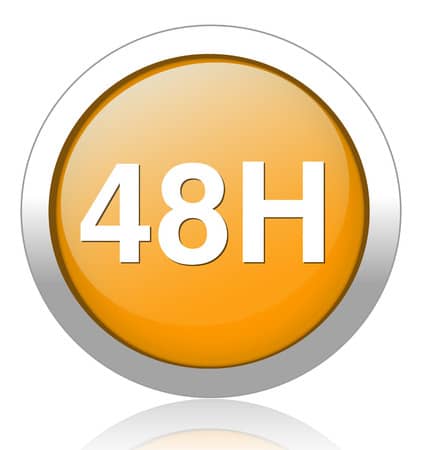As law firm administrator one of my chief responsibilities was to resolve problems. Whether it was a work conflict or inappropriate behavior, often the problem would land on my desk. When I was new to the job, I was always jumping up to solve things. A problem would arise, and I would immediately rush to solve it. Eventually, I began to realize that I wasn’t giving myself enough time to get to the heart of the issue. I would hastily gather what I thought were the facts and take action. When I acted too quickly, I wouldn’t come to the best solution and the problem would always find its way back to me.
After a while, I created the 48-Hour Rule. I would wait for a minimum of two days before taking action on any problem. Even if someone made it sound like the firm was going to burn to the ground if I didn’t take immediate action, I would wait.
What was the magic of 48 hours? It helped me to determine the severity of the problem and engage with possible solutions.
Many times when people came to my office with a problem, what they really wanted was someone to talk through it with them. They needed an objective point of view. Once they were heard, time and again they would come back two days later and tell me they worked it out themselves.
You might be asking, “But what if it’s my problem? How is 48 hours going to help me?”
48 hours gives you time to check the facts
I have a particular client that uses the mantra “check the facts” when she becomes alarmed by a possible problem. She takes time to determine what’s true about the problem versus her perception of the problem. In order to truly understand the dynamics of a situation, you have to first check the facts.
Fact-checking takes time and the ability to deescalate your emotions. If you are angry, frustrated, or afraid, chances are you can’t clearly see the facts. You are blinded by your emotions.
Step back and set the clock for 48 hours and get to the facts.
48 hours gives you time to listen for clues
One of the best ways to to check the facts is to get curious. Stop fixing and start listening. Do a bit of investigation around the problem. Talk to other people about their knowledge of the situation and listen to what they have to say.
If I had to manage a disagreement between an attorney and a staff member, I would often talk to other people about their experiences with both individuals. This often uncovered facts and issues that shed light on the problem. In fact, listening on a regular basis helped me to spot potential problems and solve them before they bubbled to the surface. When you aren’t sure, listen.
48 hours gives time for your intuition to kick in
Another benefit of waiting 48 hours is that you get to sit with the problem and give your intuition time to kick in. So often I get an answer to a problem in the shower. I have found that the answer I get after waiting and contemplating is almost always spot on. In fact, I rarely question my gut-checked decisions.
48 hours helps you decide if its a problem or a dilemma
Waiting 48 hours also helps you to determine whether you have a problem or a dilemma. A problem is something that has a solution. It might not be easy, but there are steps you can take to solve it.
A dilemma usually has long-term challenges that don’t have an immediate solution. Typically you have to make a choice between two or more equally undesirable alternatives. In these situations you need input, buy-in and communal effort to come to a resolution. Ultimately, you need much longer than 48 hours to manage a dilemma, but time is key to building an effective strategy.
I live by the 48-hour rule in both my professional and personal life – well most times I do. What do you do when faced with a problem? Share your suggestions in the comment section.
